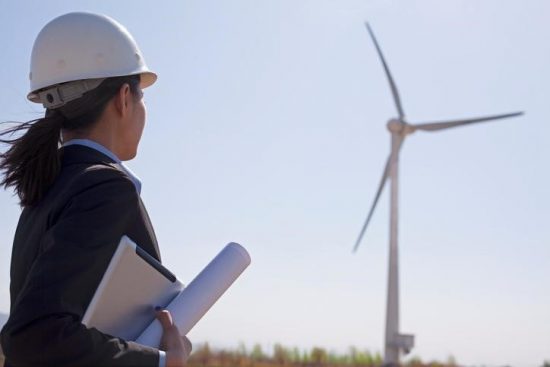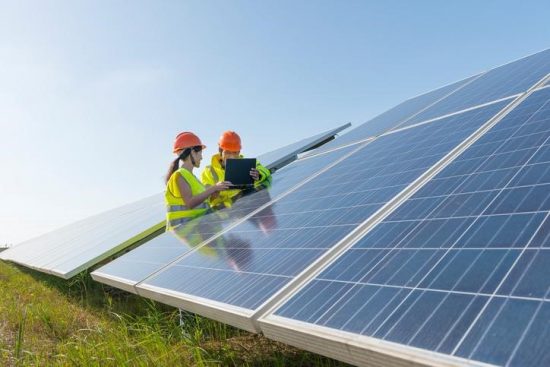Guest Blog: The Growing Trend of Green Energy Jobs

Guest Blog Written By: Danielle Hegedus
Careers related to renewable energy, or “green energy” are on the rise around the world. This is due in large part to advances in technology that have lowered the cost of renewable energy just as public interest in sustainable sources of power has hit an all-time high. The solar industry has increased 82% in the US in just the past three years. What’s more, wind energy jobs have increased 100%, with a new wind turbine installed every 2.4 hours in the first quarter of 2017! State and federal tax credits have also helped incentivize average consumers to adopt renewable energy, increasing the demand for a trained workforce. If you’re looking for your next career opportunity, or trying to find a way to break into the eco-friendly energy sector, here’s what you need to know.
How is Green Energy Classified? And Why is It So Important?
Whether it’s referred to as renewable, clean, or green energy, it’s energy that is generated from and naturally replenished by natural resources such as sunlight, rain, wind, or geothermal heat. Unlike traditional fossil fuel energy sources, renewable energy doesn’t emit carbon dioxide into the atmosphere. Along with other gases, carbon dioxide blocks heat from escaping our atmosphere, Our reliance on fossil-fuel-based energy has increased the concentration of carbon dioxide (CO2) in our atmosphere by more than a third since the Industrial Revolution began. In addition to making the temperature of the planet rise, CO2 emissions are impacting the severity of storms, and melting glaciers and contributing to sea levels rising, which has the potential to destroy animal habitats and force people who live on coasts to seek refuge in-land where they will face tough competition for increasingly scarce land for living and agriculture. Many people believe that the switch to renewable energy, along with other behavioral changes, can help reverse the effects of climate change. So if you choose to enter the green energy sector, you can feel good about the impact of your work on the health of the planet and future generations to come.
So What Kind of Job Can I Get?
You don’t have to be on a roof installing residential solar panels to work in the industry—though there are plenty of jobs in that field if you are interested! Get started now though, because by 2025, Oregon is projected to see the highest growth in the following clean energy job sectors: solar PV manufacturing, wind power development, green building design services, sustainable bioenergy, and smart-grid technology.
The highest growth is projected in the solar industry. While the Pacific Northwest may have a reputation for being rainy, you can still expect at least 144 sunny days a year in Oregon, making solar power a great option for families or businesses looking to reduce their utility expenses and their environmental footprint. There are a lot of job opportunities in the field, too. Are you customer service oriented and good at breaking down complex concepts? You might be great at helping customers understand the long-term benefits of investing in solar, while helping them access tax incentives and rebates to maximize their return on investment. If you prefer to be out in the field, careers as a solar fabricator or installer pay an average $15-20 an hour with higher wages possible with professional certification.

If solar isn’t up your alley, but you have an aptitude for solving problems, you may want to consider engineering. Engineers make up a large part of the green energy workforce (typically, but not limited to mechanical, electrical, and environmental), designing systems to harness and transport power such as solar cells or hydroelectric dams. While you’ll need to have a bachelor’s degree at a minimum, engineering jobs can pay from the high $60K to six figures.
Finally, it’s nearly impossible to drive through Oregon without seeing a wind turbine. Oregon ranks in the top five states in the country for its generation and use of wind power. If you have the capital and the willingness to work hard and build a project from the ground up, you may want to consider highly lucrative wind farming. If the cost and logistics of running a massive wind farm aren’t for you, don’t worry. Oregon’s wind farms need lots of employees to help build and instal turbines, set up power distribution, and fix structures when they break down. To access these jobs, a background in engineering, construction, electrical and mechanical work, and/or heavy machinery are all major pluses and can help increase your hourly rate or annual salary.

Where can I Get Training?
Check out these training resources from the Department of Energy to get started. They also have a career planning guide that helps you find internships and career opportunities within the sector. By participating in trainings, earning professional certifications, and getting as much hands-on experience through internships or apprenticeships, you’ll be a more competitive and more qualified job candidate, bound for great success in this industry.
This is the blog is guest blog the growing trend of green energy expensive information is helping. thank you for share this blog